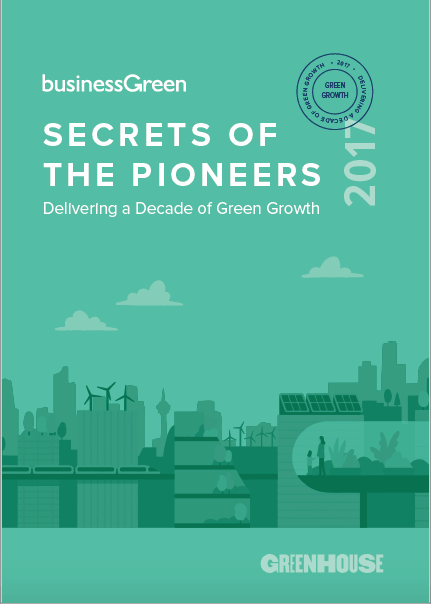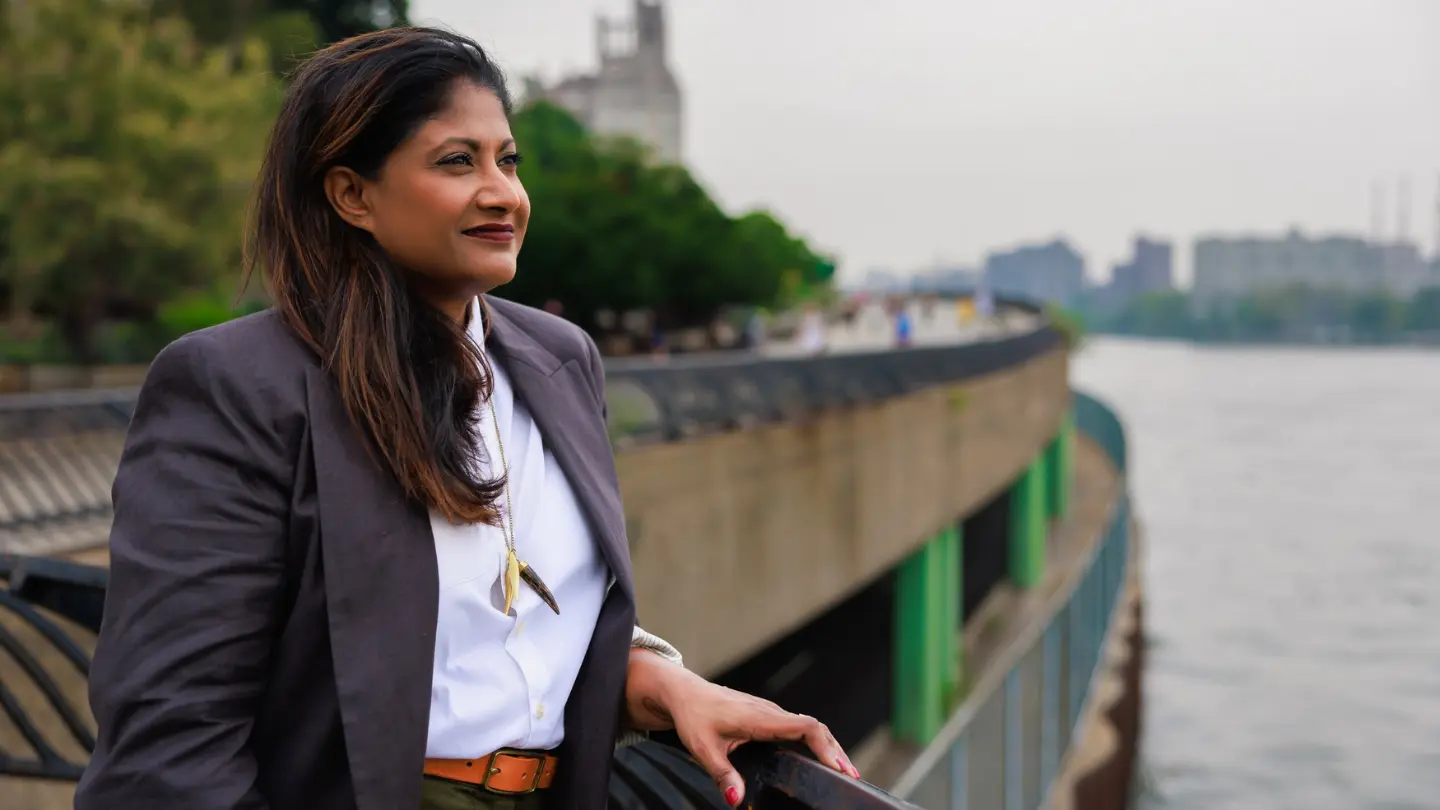Secrets of the Pioneers: Lord Nicholas Stern

We speak to Lord Nicholas Stern, chair of the Grantham Research Institute on Climate Change and the Environment at the London School of Economics.
The interview is part of a series for a report, Secrets of Pioneers, Delivering a Decade of Green Growth, which will be launched at the BusinessGreen Leaders’ Summit on 9th November 2017.
Lord Stern is the author of the Stern Review, a seminal report commissioned by Tony Blair and Gordon Brown into the economic impacts of climate change.
He was knighted for services to economics in 2004, made a cross-bench life peer as Baron Stern of Brentford in 2007, and appointed Companion of Honour for services to economics, international relations and tackling climate change in 2017.
Where were you in 2007?
I came into the sector as someone who has spent their life in economic policy. I was in the Treasury in 2007, but I had just spent 10 years as a chief economist – first of the European Bank for Reconstruction and Development and then the World Bank. Prior to that, I had been an academic all my life.
In 2005 I was asked by Gordon Brown and Tony Blair to look at climate as a big policy and economics question. I started work in the summer of 2005 right after the G7 summit in Gleneagles, where we’d had Africa and climate change on the agenda. I had written the report for the Commission for Africa and we’d made good progress, but on the other subject we had made very.
We decided one of the reasons for this was that we hadn’t seen climate change strongly enough as an economic subject. We had seen it as an environmental issue and a long way down the track, and people’s minds weren’t focused.
So that’s how it started, and as soon as I got deeply into the subject it became crystal clear to me just how big the risks were. It was a huge economic issue, and more than that, it began to be clear that if we went down different routes towards a low-carbon economy that is much less polluting, much less wasteful, that is a very powerful growth story.
Can we see the connection between the environment and the economy much more readily now?
I think that’s absolutely right – that is the big change of the last 10 years. We would not have got the Paris Agreement in December 2015 without the deepening understanding that this was the growth story.
Essentially sustainable infrastructure drives growth. It drives growth now in terms of improving demand and sharpening up supply. Over the medium term the whole story of the low-carbon economy sparks off a great wave of technological change, what economics historians call a Schumpeterian wave of economic change, after Joseph Schumpeter who wrote about creative destruction and waves of technological change. And in the longer term there is no high-carbon growth story – it creates an environment so hostile it chokes off and reverses economic development.
If you ask me what the big change in our understanding has been, it’s exactly that. It’s come through studies, it’s come through our experience of how bad high-carbon growth can be in terms of pollution and congestion and so on. It’s probably too early to declare complete victory in that argument, but it is pretty well established now. And that’s been key.
What’s the most important lesson you have learned in the last decade?
That this is a very attractive growth story. This is not about sacrificing something for the environment. This is about actually growing and developing, reducing poverty and building more inclusive societies in a very different and more attractive way then we have done in the past.
What needs to happen by 2027?
In terms of emissions we should have been going down strongly as a world for six or seven years. In 20 years’ time we need emissions at least 20 per cent lower than now, so we should be at least halfway there 10 years from now.
We should essentially be phasing out the internal combustion engine, because if for example you’re not going to sell them any more in India by 2030 then by 2027 the whole industrial structure will have to be changing. So by 2027 the combustion engine has to be on the way out.
I think you will also see city centres which are better managed so congestion and pollution are far less. In terms of cars, roads and city management, we are going to see dramatic change.
I think by 2027 we have to have a much better understanding of how we can go negative, because we’ve got to go carbon zero 50 years from now. And if we are going to be carbon zero we have to have quite strong areas where we are carbon negative, because you are going to have some places where there are carbon positives. We had better prepare for it now.
Do you think we will be on course for two degrees?
I think there is a good chance, coupled with a great risk we might not be. We’ve got ourselves in a position now where we can make it. I’m very optimistic about what we can do, I’m much more cautious about what we will do.
What role will you play over the next 10 years?
I’m going to be involved in the whole story of sustainable infrastructure. Because all this is set in the context of the global agenda of 2015, which is the Sustainable Development Goals (SDGs) and the Paris Agreement, and sustainable infrastructure is absolutely at the core.
When we talk about sustainable infrastructure we are talking about energy, transport, water, the design of cities. A big part of that new investment in infrastructure is going to be in emerging markets and developing countries. My own work will be focused in large measure around fostering and financing sustainable infrastructure, because quantitatively it’s so important to what we have to do. Public policy, the reduction of uncertainty and risk, and bringing forward the right kind of finance at the right time is absolutely crucial.
I have also been very involved in the Global Challenges Research Fund and the Industrial Strategy in the UK, and I would like to stay closely involved in that.
If you could invest in one clean technology through to 2027 which would it be and why?
I’m very cautious about the one shot, because all our infrastructure has to be sustainable from now on, whether it’s in energy, transport, water, or the design of cities.
If I could name two areas though it would be solar and wind, in the context of the management of the whole electricity supply. I also think there is huge progress in resource efficiency and the circular economy. Self-drive cars will actually mean we build fewer cars, because they will be working all the time rather than just sitting on drives.
But beware the one shot story, because this has to operate across the whole economy.
If you could give some advice to someone starting out today, what would you tell them?
I’ll say what I say to my students: get some skills. I’m in the economics profession so I encourage them to go and get some post-graduate skills in economics, so that they will be very good at helping with public policy. If they are going to be really creative engineers I would again encourage them to go and get really good, relevant high-level skills.
So my advice to young people would be to first really invest in the skills they can bring to the world and then get experience in changing things and being entrepreneurial.

This interview is one of more than 20 which make up a report, Secrets of the Pioneers: Delivering a Decade of Green Growth, to be published on 9th November, coinciding with the BusinessGreen Leaders’ Summit.
We have already featured 10 other interviews with leaders from the sector, including Christiana Figueres, former executive secretary of the United Nations Framework Convention on Climate Change, Mike Barry, director of sustainable business at Marks & Spencer, and climate scientist Dr Emily Shuckburgh. These interviews and many others are available on the blog.
This year marks the 10th anniversary of both BusinessGreen and Greenhouse PR, the specialist communications agency which supports businesses, entrepreneurs and campaigners working to create a green economy.
At Greenhouse, we support a wide variety of organisations pioneering new standards of sustainability across multiple sectors. Whether it’s fashion, finance or farming, we’re always on the look-out for new opportunities to reach our clients’ target audiences. If you’ve got a great story and need our help to tell it, we’d love to hear from you.


